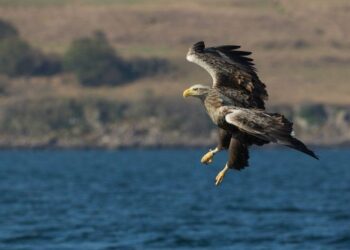A new report has shed light on the remarkable return of several rare breeding bird species, signaling a hopeful shift in conservation efforts. Published by leading ecologists, the findings reveal that targeted habitat restoration and protective measures are contributing to the resurgence of these vulnerable birds. The report, featured in the latest edition of Inside Ecology, offers a detailed look at the species making a comeback and examines the implications for biodiversity and environmental policy.
Rare Breeding Bird Species Make Remarkable Comeback in Key Habitats
The latest ecological survey has documented a significant resurgence in the populations of several rare breeding bird species across protected wetlands and forest reserves. Conservation efforts, including habitat restoration and stringent protection measures, have played a pivotal role in this recovery. Species once on the brink of local extinction are now exhibiting healthy breeding patterns, indicating a promising shift towards ecological balance.
Key findings from the report highlight:
- Over 30% increase in breeding pairs of the elusive Marsh Harrier.
- Recolonization of historic breeding sites by the Spotted Crake.
- Improved nesting success for the endangered Black-winged Stilt.
- Enhanced biodiversity supporting a wider food web around these species.
| Species | Population Growth | Habitat Type |
|---|---|---|
| Marsh Harrier | +32% | Wetlands |
| Spotted Crake | +28% | Swampy Woods |
| Black-winged Stilt | +35% | Shallow Lakes |
Experts Analyze Factors Driving Population Recovery and Habitat Restoration
Leading ecologists suggest that a combination of targeted conservation efforts and natural ecosystem resilience have played pivotal roles in the resurgence of several rare breeding bird populations. Key drivers include the restoration of native vegetation, stringent protection laws, and community-led habitat management initiatives. Experts emphasize the synergy of these factors, noting that species-specific interventions such as nest site protection and predator control have produced measurable improvements in breeding success rates.
Moreover, climate adaptability and improved water quality have contributed significantly to habitat suitability, enabling species to reclaim areas once considered lost. Researchers highlight the importance of continuous monitoring, with detailed data collection underscoring trends that inform adaptive management strategies. The table below summarizes crucial factors linked to population growth and habitat restoration, providing stakeholders with actionable insights.
| Factor | Impact on Recovery | Long-Term Benefit |
|---|---|---|
| Native Vegetation Restoration | Enhances shelter and food sources | Supports stable breeding habitats |
| Predator Control Programs | Reduces nest predation rates | Improves chick survival |
| Water Quality Improvements | Increases available wetland habitat | Promotes diverse aquatic ecosystems |
| Community Engagement | Fosters stewardship and awareness | Ensures sustainable conservation effort |
Conservationists Urge Enhanced Protection Measures to Secure Future Growth
Recent findings highlight a promising resurgence of several endangered bird species, yet experts warn that this recovery is fragile without significant policy reforms. Conservationists stress that habitat preservation and stricter monitoring are critical to sustain these gains. Current threats such as urban expansion, pollution, and climate change continue to impose severe risks, making immediate action indispensable. Enhanced legal frameworks and increased funding for habitat restoration are among the key recommendations being advocated.
Key proposed measures include:
- Expanding protected areas to cover critical breeding grounds
- Implementing stricter land-use regulations to limit habitat destruction
- Strengthening community-led conservation initiatives
- Enhancing scientific research funding to monitor bird populations
| Species | Breeding Pairs (2023) | Population Trend |
|---|---|---|
| Marsh Harrier | 230 | Increasing |
| Black-tailed Godwit | 150 | Stable |
| European Storm-petrel | 90 | Slightly Declining |
The Way Forward
The resurgence of these rare breeding bird species marks a promising turnaround for conservation efforts and highlights the importance of sustained habitat protection. As this new report reveals, careful monitoring and targeted initiatives continue to play a crucial role in supporting biodiversity. Moving forward, experts emphasize the need for ongoing research and community engagement to ensure these populations thrive for generations to come. Stay tuned to Inside Ecology for further updates on this evolving environmental story.















![[News] China Makes Breakthrough in Chip Technology, Paving the Way for Lithography Advancements – TrendForce](https://earth-news.info/wp-content/uploads/2025/11/324664-news-china-makes-breakthrough-in-chip-technology-paving-the-way-for-lithography-advancements-trendforce-360x180.jpg)













